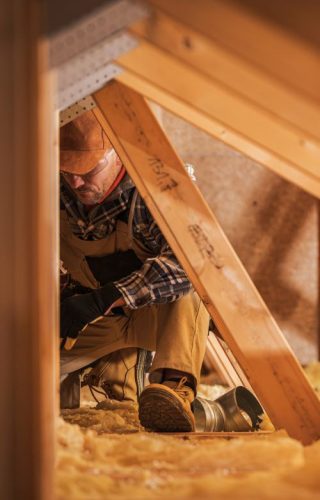
Working in Heat – OSHA Standards Summarized
Working in heat can cause illnesses that last weeks, months, or lifetimes. Many even succumb to heat-related illnesses every year—especially in the first hot week of the summer.
OSHA states 50-70 percent of heat-related fatalities happen in the first few days of working in warm environments. This is due to poor acclimatization, abnormal heat (bakeries, factories, steel mills), and weather. If your team is working under these conditions, then special precautions should be prepared—especially with new staff who aren’t used to the conditions. Let’s go over our collated facts and suggestions listed by OSHA and experts.
Heat-Related Illnesses – Warning Signs, Symptoms
Preventative Measures, Treatment, and Planning – Employer/Employee Solutions
Dangerous Temperatures – OSHA and Federally Recognized Limits
Factors, both Personal and External – Personal/Environmental Multipliers
Additional Working in Heat Resources and eLearning Courses
Heat-Related Illnesses
Heat Stroke or Sun Stroke
Over 600 people succumb to heat stroke a year in the United States alone. When the body exceeds the temperature of 40 degrees Celsius or 104 degrees Fahrenheit, this is considered heat stroke. Heat stroke can damage the brain and other vital organs, which can lead to death.
Symptoms:
- Rapid heart rate
- Heavy Sweating
- Hot Skin or extremely high body temperature
- Seizures
- Unconsciousness
- Slurred speech
Heat Exhaustion
Heat Exhaustion can lead to heat stroke and dehydration and is considered a serious threat. Heat exhaustion is prevalent in areas with high humidity and heavy exertion. Heat Exhaustion can take two forms. One of the two types of heat exhaustion is salt depletion which is usually accompanied by nausea, vomiting, and dizziness. Water depletion is the other, signs include weakness, thirst, and headaches.

Symptoms
- Rapid heartbeat
- Profuse sweating
- Dark urine
- Nausea
- Muscle cramps
- Pale skin
- Headache
- Fatigue
Rhabdomyolysis
Rhabdomyolysis can disable or fatally injure victims. It’s a medical term for damaged muscle tissue being released into the blood (proteins and electrolytes). This can cause damage to the kidneys and heart. Excessive heat can cause “Rhabdo,” but other causes can be over-exertion and trauma.
Symptoms
- Dark urine
- Muscle Pain
- Weakness
Heat Cramps
Heat Cramps are another warning sign, and a medical condition of its own. They have been described as spasms or cramps and are prevalent after long exposures to heat, exertion, and sweat.
Symptoms
- Pain
- Spasms
- Leg and arm discomfort

Preventative Measures, Treatment, and Planning for Working in Heat
Each job should be performed in the most shaded and cool area possible. However, sometimes the only available areas are still exceedingly warm, and moving large items needed for tasks to cooler areas requires more labor and isn’t always an option. It’s crucial during initial planning to think about all-weather possibilities.
Tactics or items that will mitigate, if not eliminate, any heat-related illnesses include:
- Easy and encouraged access to water
- Fans or air circulating devices
- Sunburn Protection
- Acclimation
- Lightweight, breathable clothing
**Note** Coveralls are worn in some places of work to mitigate cuts and clean-up. However, the excessive heat some clothing incurs should be considered. Look at what is a more prevalent risk to your team’s health before opting for heavier clothing.
Acclimation
Let’s dive deeper into Acclimation and its influence on working in heat. Acclimation is the act of preparing one’s body for a different environment. For our purposes a much warmer environment. It’s one thing to enjoy a cold drink on a beach, and another to wrestle beach chairs into an organized seating area; so exertion is a major factor.
New employees who are exposed to abnormal heat should be taught about the signs of heat-related illnesses. Others recommend watching new staff, but an informed employee is far less likely to succumb to heat than one who merely monitored.
During the acclimation, it’s unfair to assume the new employee can achieve the same as seasoned teammates. Exposing a new employee to overt temperatures and excursions will only slow them down and lead to the heat-related medical conditions we’ve been discussing. Someone with sun/heat stroke the day before will perform poorly the next day, regardless of the rest they gained in between.
Treatments for Heat-Related Illnesses
Heat Stroke – Treatment
Heat Stroke is the most serious of all heat-related illnesses and emergency workers or professional medical attention should be requested or alerted as soon as possible. It’s important to know that you are dealing with a life-threatening condition. Ideally, one person should seek medical assistance and others should help the victim to a shaded, or cooler location.
- Seek shade or a cooler location and move victim there
- Alert medical professionals
- Use cold packs, a garden hose, ice bags, or any means to cool the victim. Focus on the back of the neck, and armpits)
- Give victim cold water if they are alert
Heat Cramps – Treatment
- Rest
- Give water
- Avoid exertion for 2 hours
- Seek medical aid if symptoms do not subside for an hour
Heat Exhaustion – Treatment
- Provide cool drinks
- Rest
- Recommend cold shower
- Recommend a cool room or air-conditioned environment
- Remove equipment or hot gear
Rhabdo – Treatment

Dangerous Temperatures – OSHA
OSHA has clearly stipulated the dangerous temperatures and the differences between acclimatized and unacclimatized team members. Below we’ve stated their recommendations.
Below 70°F (21°C) – Low risk for both unacclimated and acclimated staff
70 °F – 77°F – Medium risk for hard-working unacclimated staff
Above 77°F – High risk for hard-working unacclimated staff and medium risk for acclimated staff
Working in Heat Factors, both Personal and External
There are many factors that could increase the temperature and raise the risk of heat illness. Clothing, acclimation, sunlight, humidity, and workload can all increase risk.
OSHA recommends you measure workplace environmental heat with a wet globe (WBGT) monitor. Then add the additional factors to your measurements that we’ve mentioned above and explain below. If your company has radiant heat from ovens, then they recommend you get an instrument that can measure radiant heat. There are wet globe devices that can measure evaporative cooling potential, radiant heat, and ambient air temperature, but they may not be required in your location.
Alternatively, if a WBGT monitor is unavailable, many weather networks are displaying wet globe temperature readings on their website for a more accurate representation of the heat influencing your team. This is not the same as having your own instrument but is better than just relying on weather.
Clothing
OSHA states that clothing plays a huge role in body temperature. Limited-use vapor-barrier coveralls, for instance, are a massive factor due to a lack of breathable material. If you are attempting to measure the temperature of your staff, then you should add these numbers for clothing.
- Coveralls raise the temperature of the employee by 5°F
- Limited-use vapor-barrier coveralls raise the temperature by 19°F
Work/Labor
For unacclimated staff, OSHA recommends not exceeding these temperatures per corresponding workload.
- Light work 82.4°F
- Moderate work 77°F
- Heavy work 73.4°F
- Very Heavy 69.8°F
For acclimated staff, they recommend not exceeding these temperatures in each workload category.
Personal
Some of the personal factors you should consider are:
- Medication, alcohol, opioids, or illicit drugs
- Heart disease
- Physique
- Diabetes
Yet there are more. It’s important to note that not all staff can withstand the same conditions. This is why creating awareness and giving more responsibility to the employee is a great way to avoid these illnesses.
Additional Working in Heat Resources and eLearning Courses with Certification
Below are resources along with courses to help prepare your staff for the summer months or hot environments. The courses come with completion documentation and proof of competence.
- OSHA’s Guide to Heat
- Heat Stress Awareness Course – Accredited eLearning Course
- Heat Stress Course – Accredited eLearning Course
- Heat and Cold Stress Training (OSHA) – Accredited eLearning Course
- OSHA’s Heat Hazard Recognition
Written by Jordan Kovacsik – BIS team member, author, and safety enthusiast who worked in the steel industry for a decade.


























